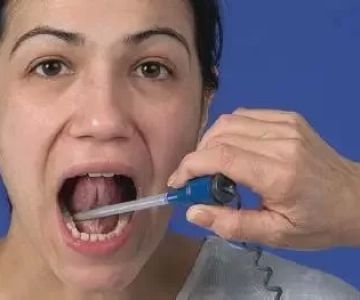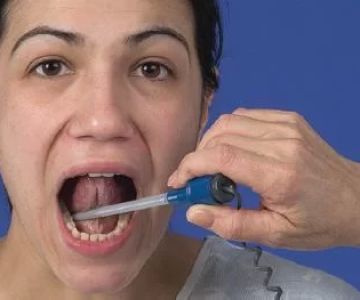Understanding Basal Body Temperature and Its Importance
Basal Body Temperature (BBT) is the lowest body temperature attained during rest, typically measured right after waking up and before any physical activity. Tracking BBT is a popular and natural method used by many individuals, especially women, to monitor ovulation and fertility cycles. By observing slight temperature changes, one can estimate fertile windows and improve chances of conception.
Measuring BBT orally is one of the most common and convenient methods. However, to gain accurate results, it is essential to understand the correct procedure and factors that influence the readings.
1. Why Oral Measurement is Preferred for Basal Temperature
Oral BBT measurement is widely favored because it is easy to perform and requires minimal equipment—just a reliable basal thermometer. Unlike other methods such as vaginal or rectal measurements, oral temperature measurement is non-invasive and comfortable for most people, making it suitable for daily monitoring.
Still, oral readings must be taken consistently under similar conditions each day to reflect true basal temperature without interference from external factors.
How to Check Basal Temperature Orally: Step-by-Step Guide
2.1 Preparation Before Measurement
Before going to bed, keep a basal thermometer by your bedside for quick access in the morning. Choose a thermometer specifically designed for basal temperature tracking, as it is more sensitive to small temperature changes than a regular fever thermometer.
Ensure you get at least 3-4 hours of uninterrupted sleep, as disturbances can affect temperature readings. Consistency in sleeping patterns improves reliability.
2.2 Morning Routine for Accurate Reading
Immediately upon waking—before getting out of bed, talking, eating, drinking, or even moving around—place the thermometer under your tongue. Close your mouth and breathe through your nose to avoid altering the temperature reading.
Keep the thermometer in place for the time recommended by the manufacturer, usually around 3-5 minutes, to ensure an accurate measurement.
2.3 Recording and Interpreting Results
Once measured, record the temperature precisely, preferably using a fertility tracking app or a dedicated BBT chart. Over days and weeks, a pattern will emerge indicating ovulation—typically a slight rise of 0.4 to 1.0 degrees Fahrenheit after ovulation occurs.
Interpreting these patterns can help predict fertile days and guide family planning decisions.
Common Challenges and Tips for Accurate Oral Basal Temperature Measurement
3.1 Avoiding External Influences
Several factors can impact oral BBT readings, including:
- Illness or fever
- Alcohol consumption the night before
- Irregular sleep schedules
- Eating or drinking before measuring
- Using an inaccurate or faulty thermometer
Being mindful of these variables and trying to maintain consistent habits improves the reliability of your temperature tracking.
3.2 Using the Right Thermometer
Digital basal thermometers are recommended over mercury ones due to safety, ease of reading, and quick results. Some thermometers come with memory functions to save previous readings, making it easier to track trends.
3.3 Patience and Consistency are Key
BBT tracking is not a one-time process. It requires daily measurement over several months to accurately detect ovulation trends. Many users find it helpful to combine BBT tracking with other fertility indicators like cervical mucus observation for more comprehensive insight.
Real-Life Story: How Oral BBT Tracking Helped Sarah Conceive
Sarah, a 32-year-old teacher from Chicago, shared her experience of using oral basal temperature tracking after struggling with irregular cycles. Initially skeptical, she followed a strict morning routine to take her temperature daily. Over three months, she identified her ovulation patterns and timed intercourse accordingly. Sarah conceived naturally shortly after, crediting the method for her success.
This story illustrates how oral BBT monitoring can empower individuals with greater awareness of their bodies and improve fertility outcomes.
Additional Advice for Oral Basal Temperature Monitoring
To further enhance the accuracy and usefulness of your BBT tracking:
- Take measurements at the same time every morning.
- Use a dedicated notebook or app to log your data consistently.
- Combine temperature tracking with other fertility signs to improve predictions.
- Consult healthcare providers if irregularities or difficulties arise.
Regular monitoring can also reveal potential hormonal imbalances or health issues that might require medical attention.
Where to Find Support and Resources
For those interested in deepening their fertility knowledge or seeking guidance, Dentistry Toothtruth offers personalized recommendations and services to support your journey. Whether you need trusted advice, high-quality basal thermometers, or fertility consultation referrals, they provide reliable resources tailored to your needs.







 Baldwin Park Family Dentistry4.0 (16 review)
Baldwin Park Family Dentistry4.0 (16 review) Sims Dentistry of Louisville4.0 (192 review)
Sims Dentistry of Louisville4.0 (192 review) Ridge Periodontics & Dental Implants3.0 (12 review)
Ridge Periodontics & Dental Implants3.0 (12 review) Jared Berger DMD3.0 (4 review)
Jared Berger DMD3.0 (4 review) David C. Li DDS4.0 (154 review)
David C. Li DDS4.0 (154 review) Blaine Kidds Pediatric Dentistry4.0 (410 review)
Blaine Kidds Pediatric Dentistry4.0 (410 review) The Importance of Oral Health Education During Pregnancy for a Healthy Pregnancy
The Importance of Oral Health Education During Pregnancy for a Healthy Pregnancy Best Tips for Brushing Your Teeth Properly for Healthy Gums: Essential Techniques for Oral Health
Best Tips for Brushing Your Teeth Properly for Healthy Gums: Essential Techniques for Oral Health Why Skipping Dental Checkups Can Lead to Bigger Oral Health Problems
Why Skipping Dental Checkups Can Lead to Bigger Oral Health Problems Advantages of Porcelain Dental Restorations
Advantages of Porcelain Dental Restorations How Can Diabetes Cause Tooth and Gum Problems? Preventing and Managing Oral Health Issues
How Can Diabetes Cause Tooth and Gum Problems? Preventing and Managing Oral Health Issues Healthy Habits for Promoting Good Oral Health and Hygiene: Tips for a Healthy Smile
Healthy Habits for Promoting Good Oral Health and Hygiene: Tips for a Healthy Smile